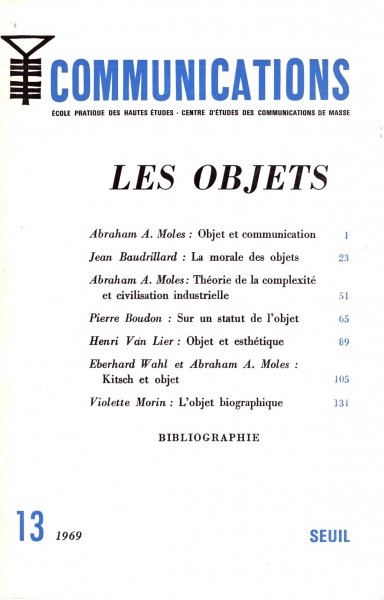Greil Marcus: Lipstick Traces: A Secret History of the Twentieth Century (1989–) [EN, ES, TR]
Filed under book | Tags: · 1968, anarchism, art, avant-garde, communism, dada, history, lettrism, marxism, music, nazism, popular culture, punk, situationists, surrealism

“Greil Marcus began work on this book out of a fascination with the Sex Pistols: that scandalous antimusical group, invented in London in 1975 and dead within two years, which sparked the emergence of the culture called punk. “I am an antichrist!” shouted singer Johnny Rotten—where in the world of pop music did that come from? Looking for an answer, with a high sense of the drama of the journey, Marcus takes us down the dark paths of counterhistory, a route of blasphemy, adventure, and surprise.
This is no mere search for cultural antecedents. Instead, what Marcus so brilliantly shows is that various kinds of angry, absolute demands—demands on society, art, and all the governing structures of everyday life—seem to be coded in phrases, images, and actions passed on invisibly, but inevitably, by people quite unaware of each other. Marcus lets us hear strange yet familiar voices: of such heretics as the Brethren of the Free Spirit in medieval Europe and the Ranters in seventeenth-century England; the dadaists in Zurich in 1916 and Berlin in 1918, wearing death masks, chanting glossolalia; one Michel Mourre, who in 1950 took over Easter Mass at Notre-Dame to proclaim the death of God; the Lettrist International and the Situationist International, small groups of Paris—based artists and writers surrounding Guy Debord, who produced blank-screen films, prophetic graffiti, and perhaps the most provocative social criticism of the 1950s and ’60s; the rioting students and workers of May ’68, scrawling cryptic slogans on city walls and bringing France to a halt; the Sex Pistols in London, recording the savage “Anarchy in the U.K.” and “God Save the Queen.”
Although the Sex Pistols shape the beginning and the end of the story, Lipstick Traces is not a book about music; it is about a common voice, discovered and transmitted in many forms. Working from scores of previously unexamined and untranslated essays, manifestos, and filmscripts, from old photographs, dada sound poetry, punk songs, collages, and classic texts from Marx to Henri Lefebvre, Marcus takes us deep behind the acknowledged events of our era, into a hidden tradition of moments that would seem imaginary except for the fact that they are real: a tradition of shared utopias, solitary refusals, impossible demands, and unexplained disappearances. Written with grace and force, humor and an insistent sense of tragedy and danger, Lipstick Traces tells a story as disruptive and compelling as the century itself.”
Publisher The Belknap Press of Harvard University Press, Cambridge/MA, 1989
Twentieth Anniversary Edition, 2009
ISBN 0674034805, 9780674034808
496 pages
via missionsamurai
Radio interview with author (30 min, KCRW, 1989)
Interview with author (Simon Reynolds, Los Angeles Review of Books, 2012)
Reviews: Simon Reynolds (Melody Maker, 1989), Jerome McGann (London Review of Books, 1989), Jon Erickson (Discourse, 1989-1990), Steve Redhead (Popular Music, 1990), Libero Andreotti (J Architectural Education, 1996).
Lipstick Traces (English, 1989/2009, EPUB, 5 MB)
Rastros de carmín. Una historia secreta del siglo XX (Spanish, trans. Damián Alou, 1993, 13 MB)
Ruj Lekesi: Yirminci Yüzyılın Gizli Tarihi (Turkish, trans. Gürol Koca, 1999, 29 MB)
Moles, Baudrillard, Boudon, van Lier, Wahl, Morin: Les objets (1969/71) [French, Spanish]
Filed under book | Tags: · 1968, aesthetics, design, object, philosophy, political economy, psychology, semiotics, sociology, theory

Communications is a biannual social sciences journal founded by Georges Friedmann, Roland Barthes, and Edgar Morin. Soon after its start in 1961 it became a reference publication for media studies and semiotics in France and internationally.
Its first 1969 issue was dedicated to the theory of objects, positioning it “at the confluence of sociology, political economy, social psychology, marketing, philosophy, design and aesthetics” (p 141). At the same time the journal argued for the relevance of the study of objects for governmental institutions such as “the Ministry of Industrial Production, the Ministry of Transport, the customs authorities, the courts, the counterfeits studies, or the National Industrial Property Institute” (p 141).
It can be read as a post-May 1968 attempt to use the concept of object as an agent linking social sciences in order to increase their impact on direct political change, and as well as an early echo of what more than a decade later came to be known as the actor-network theory.
Two years later the magazine appeared in its Spanish translation in book form.
Communications 13
Publisher Centre d’études des communications de masse, École pratique des hautes études, and Seuil, Paris, 1969
139 pages
Les objets (French, 1969), View online
Los objetos (Spanish, trans. Silvia Delpy, 1971/1974)
Les affiches de Mai 68, ou, L’imagination graphique (1982)
Filed under catalogue | Tags: · 1968, art, graffiti, protest

A catalogue of seventy posters from May 1968 made by art and non-art students from across France using stencil, lithography, linoleum and offset printing. Collected for an exhibition held in the Salle Mortreuil of the Bibliothèque nationale, February-March 1982.
Edited and with an Introduction (in French) by Charles Perussaux
Publisher Bibliothèque nationale, Paris, 1982
ISBN 2717716254
84 pages
Commentary (Michael Seidman, 2004, pp 130-145)
PDF (via Gallica.fr), Alternative scan
View online (at Gallica.fr)

